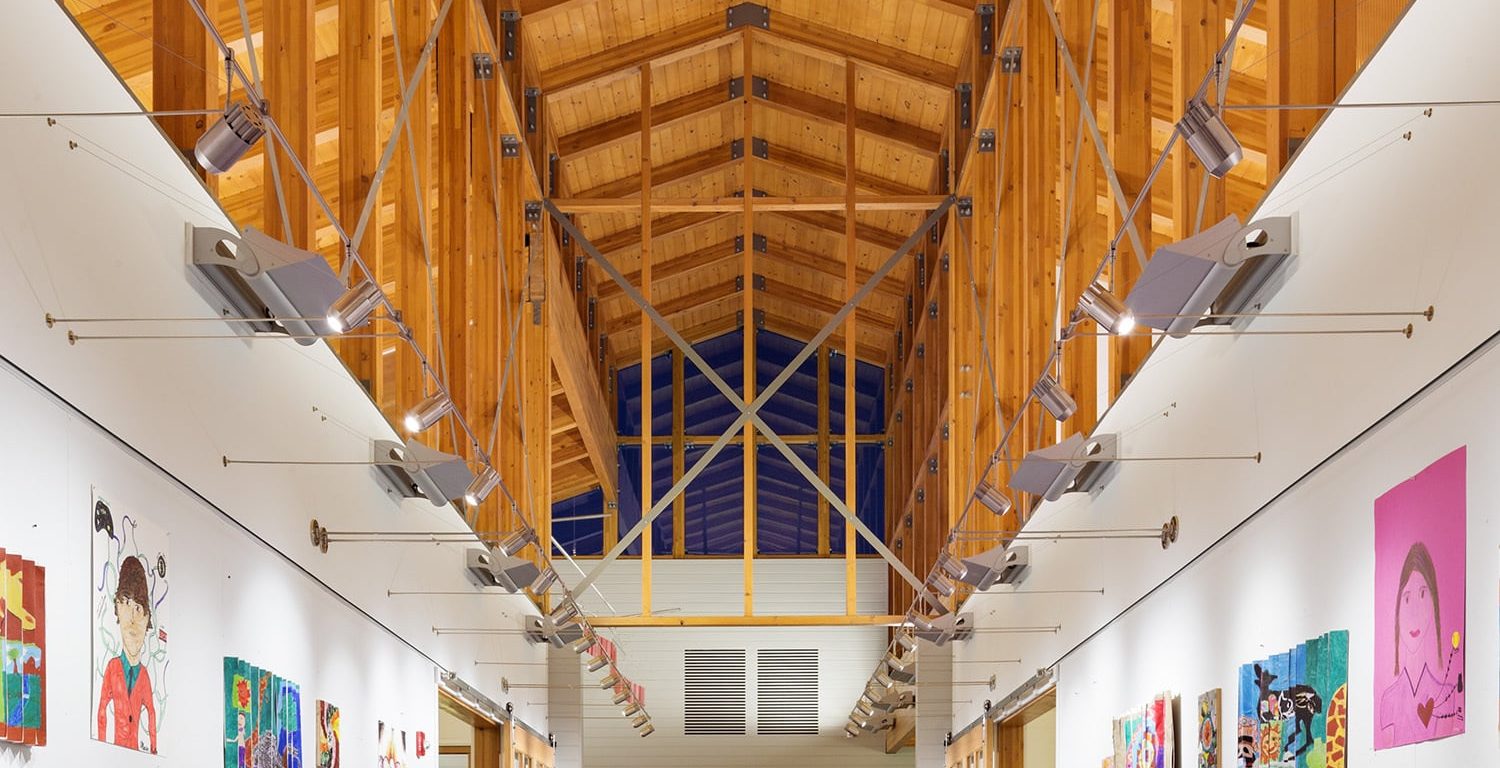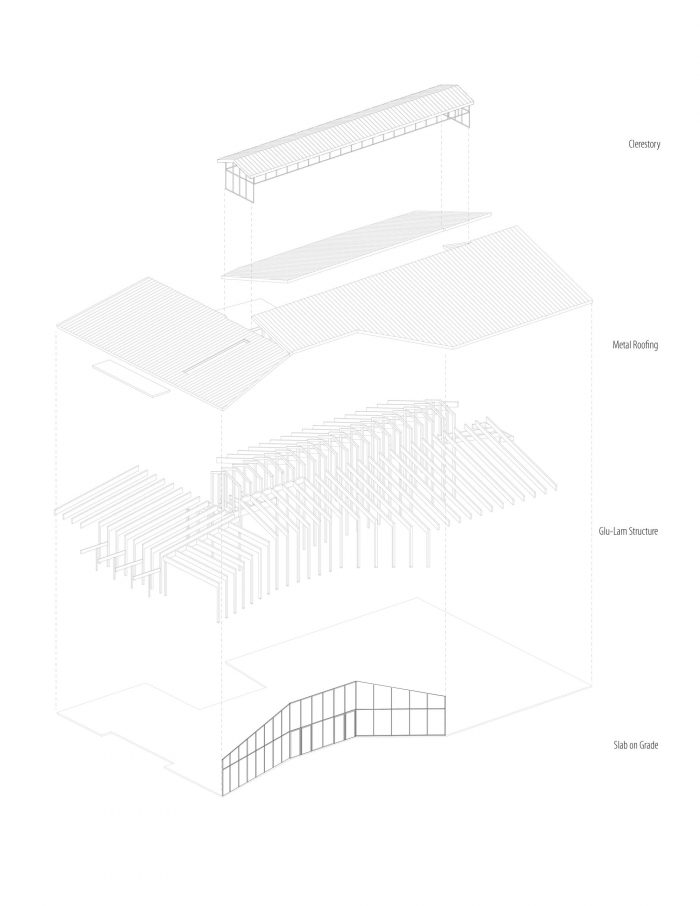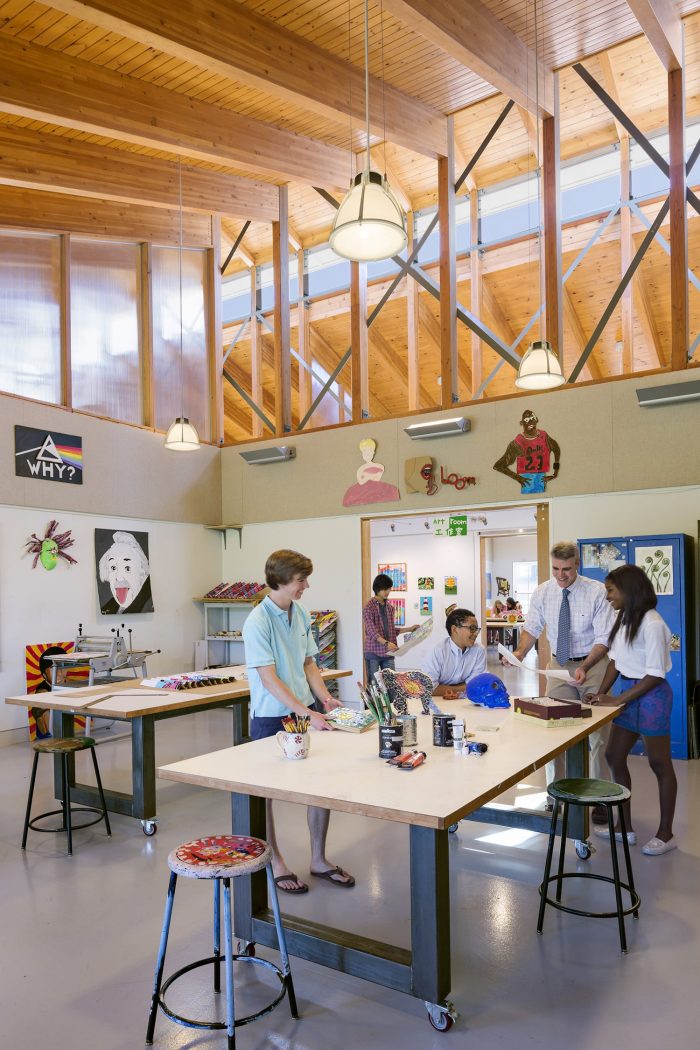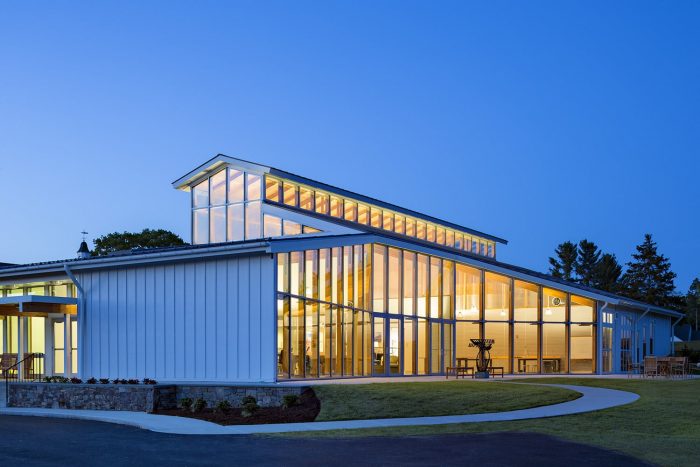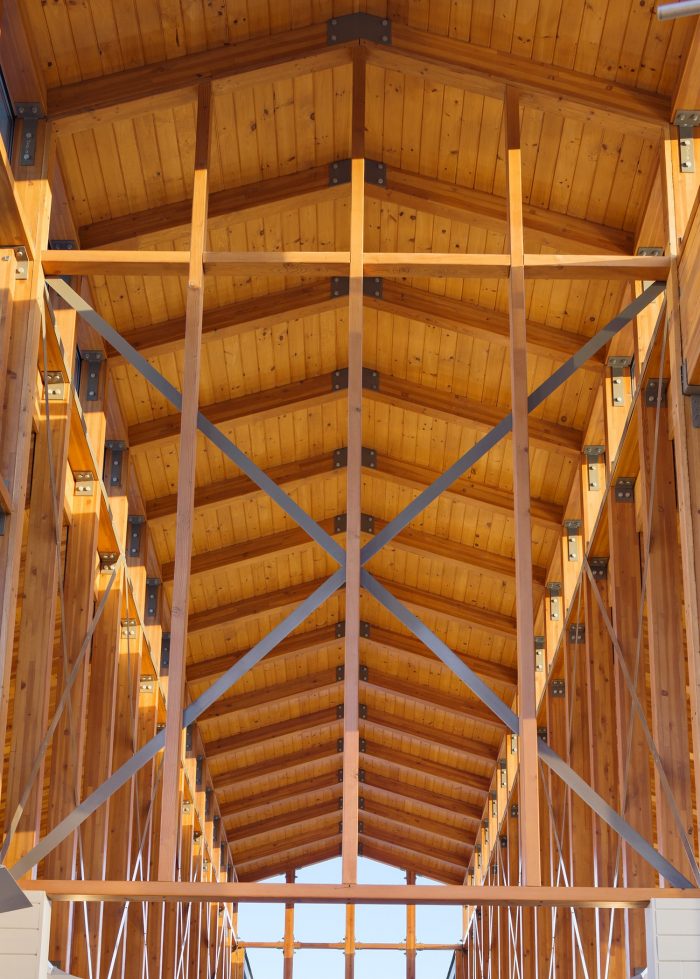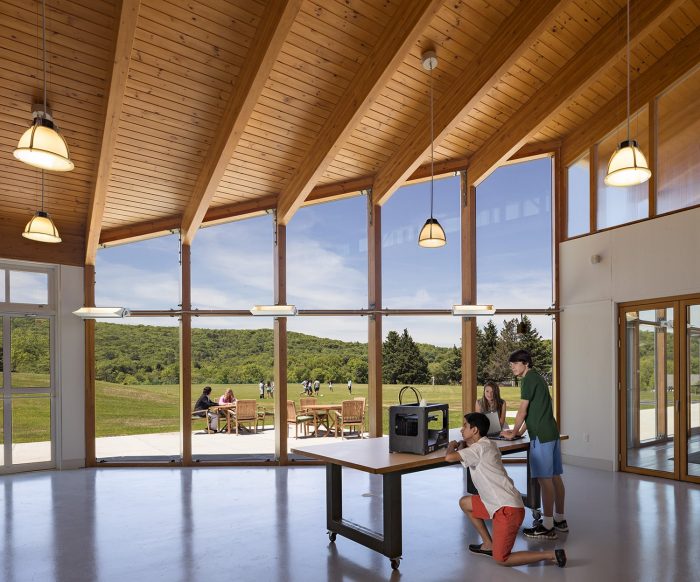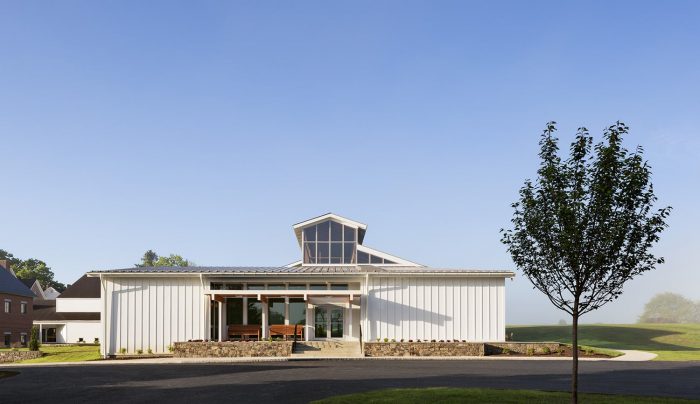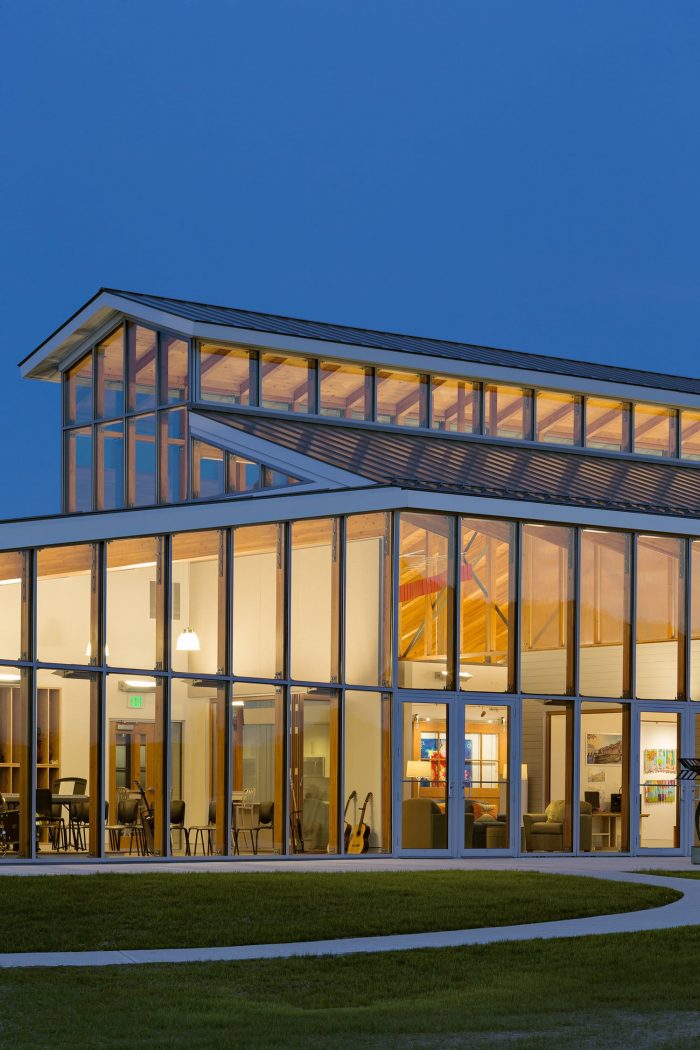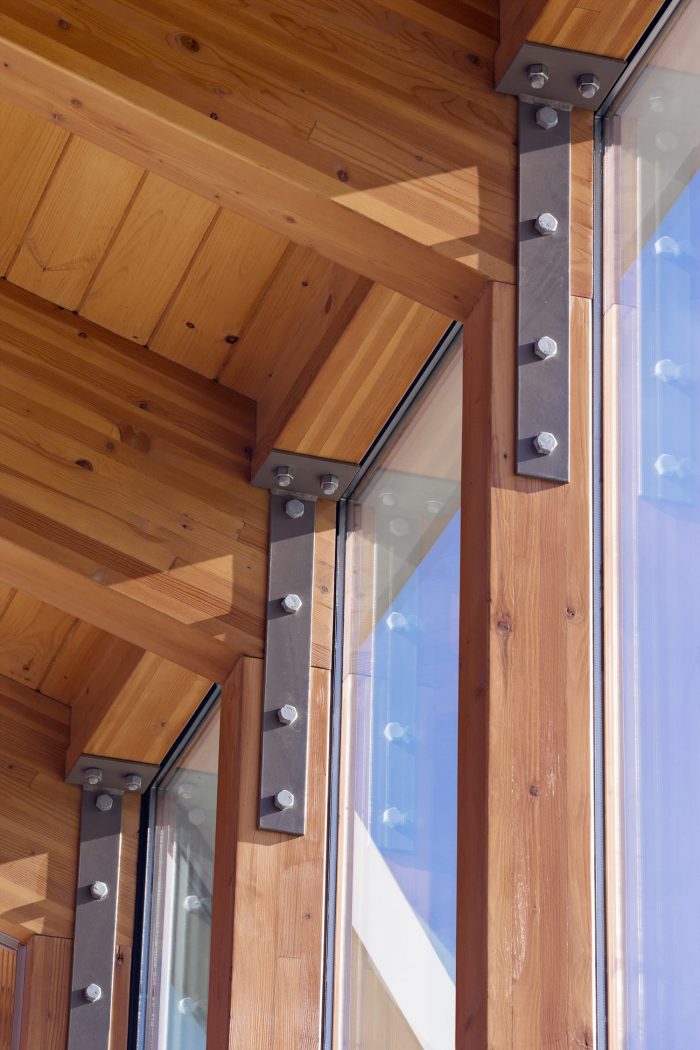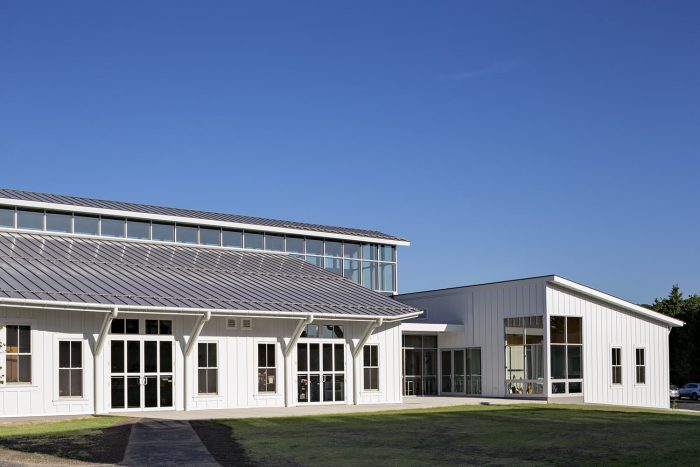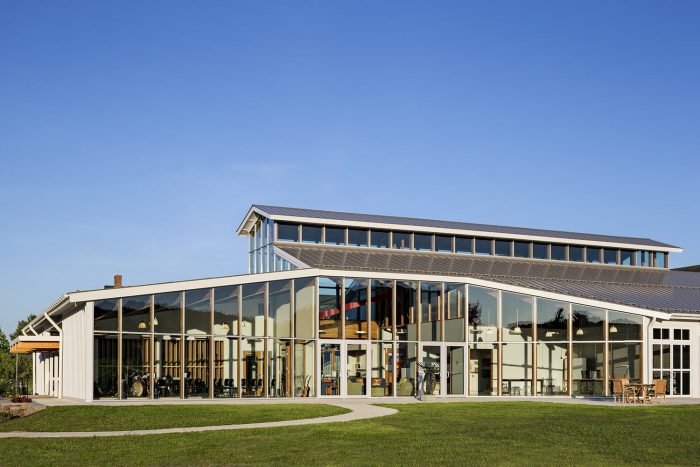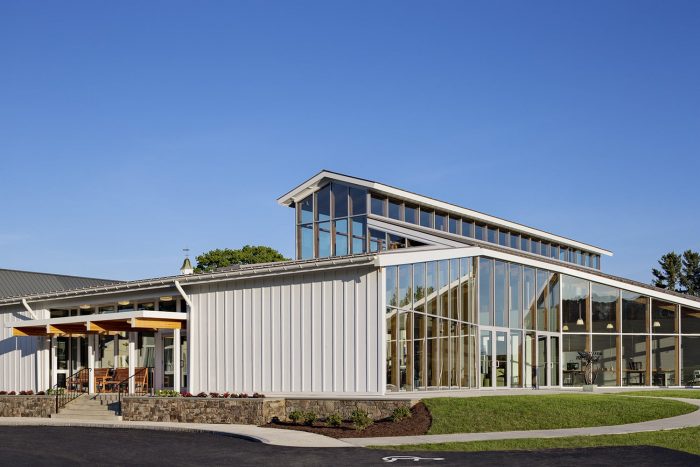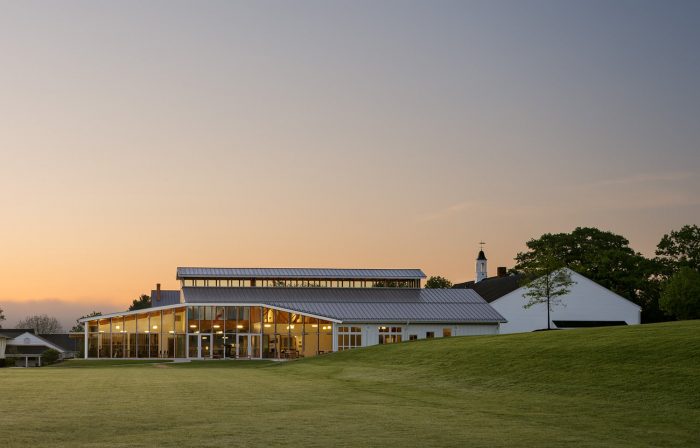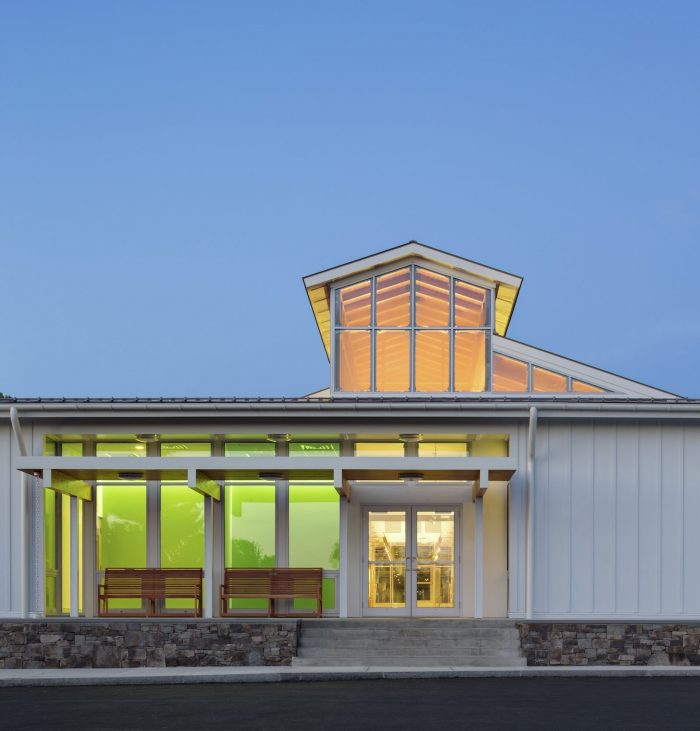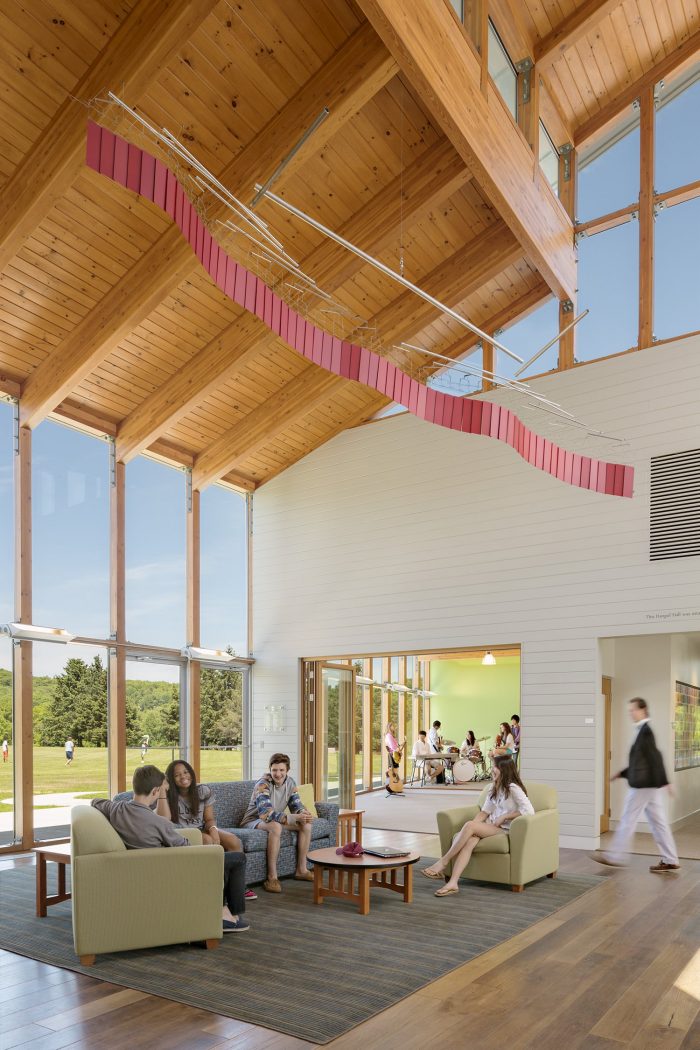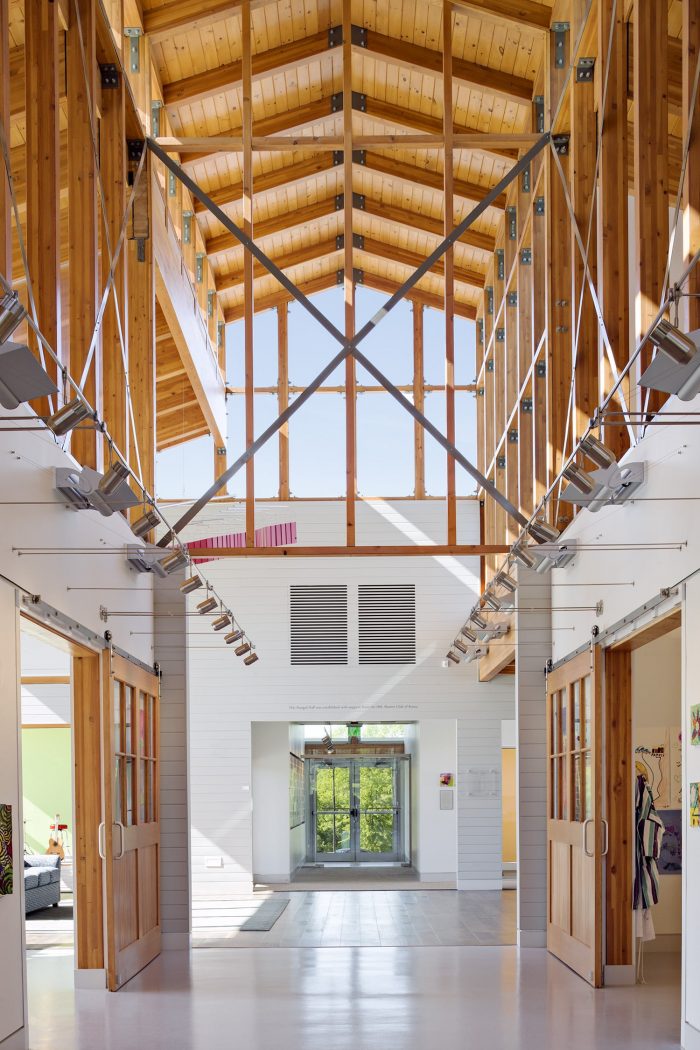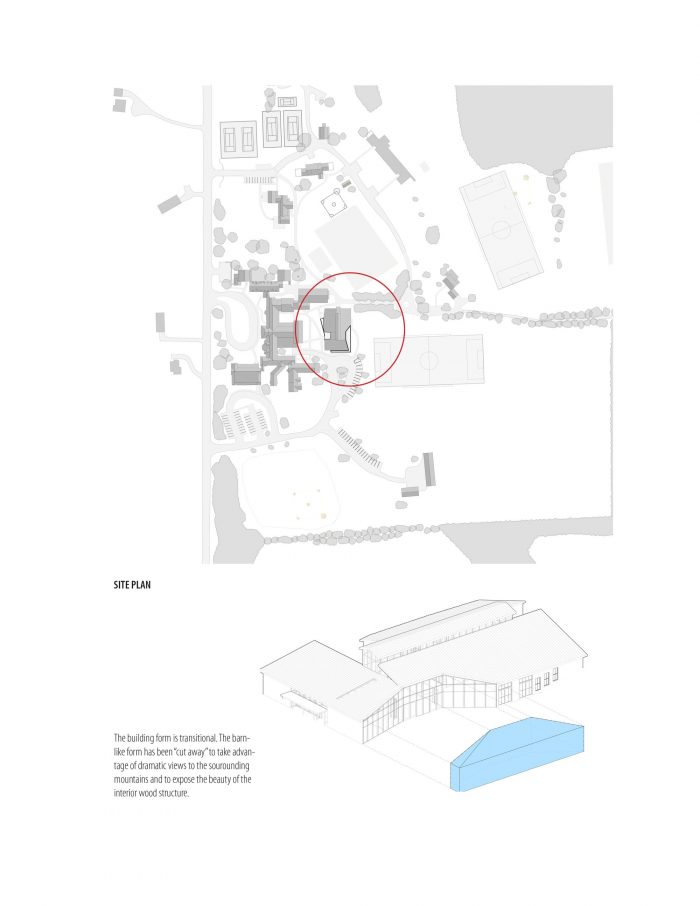印第安山学校(IMS)是一所独立的寄宿制学前班-9年级学校,位于康涅狄格州莱克维尔市,占地600英亩,有186名学生。作为为IMS进行的校园研究的结果,Flansburgh设计了一个8750平方英尺的音乐、艺术和技术大楼,专门用于协作、跨学科、基于项目的学习。该设计的特点是温馨的空间,包括有滑动谷仓门的艺术教室,可通向一个共享的画廊,以及办公室和会议空间,可通向一个访客公共空间。灵活的设计提供了一个公共空间,白天作为项目空间,晚上作为学生的休息室。小厨房和咖啡馆有助于使它成为一个很好的休闲空间。建筑的形式让人想起传统的新英格兰谷仓,有倾斜的锡制屋顶,裸露的木材和木板,以及木板壁板。这种传统的形式因大面积的玻璃而变得新颖,玻璃在平面上是倾斜的,直接固定在柱子和梁的结构上。玻璃使学校的名字–印第安山的美景一览无余。建筑物的西侧,特别是公共休息室,直接向景观开放,每间教室都有一个门通向外面。
Indian Mountain School (IMS) is a PreK-9 independent boarding school located on a 600-acre campus in Lakeville, Connecticut, serving 186 students. As a result of a campus study conducted for IMS, Flansburgh designed an 8,750-gsf music, art, and technology building specifically designed for collaborative, cross-disciplinary, project-based learning. The design features welcoming spaces including art classrooms that have sliding barn doors that open onto a shared gallery, and offices, and meeting spaces that open onto a Visitor Commons. The flexible design provides a common space, which functions as a project space during the day and a student lounge in the evening. The kitchenette and café help make it a great hangout space. The form of the building recalls a traditional New England barn with slopped tin roof, exposed timber and board, and batten siding. This traditional form is made innovative by a large area of glass, angled in plan, and fastened directly to the post and beam construction. The glass allows dramatic views of Indian Mountain, the school’s namesake. The western side of the building, particularly the common room, opens directly onto the landscape every classroom has a door to the outside.
设计挑战是提供一个跨学科的艺术中心,整合视觉艺术、音乐和科学,同时作为寄宿生的学生中心和家长的活动中心;庆祝学校作为一个 “有书的营地 “的身份。创造一个标志性的建筑(看起来像一个艺术中心),同时忠实于校园内非正式的、传统的、新英格兰农村的建筑;加强学校与周围景观的联系,特别是与学校西边的小山–印第安山的联系;为当地艺术家提供一个场所;并将建筑成本控制在300万美元以下。
The design challenge was to provide a interdisciplinary arts center that integrated visual arts, music, and science while also serving as a student center for boarders and an activity center for parents; to celebrate the schools identity as a “camp with books”; to create an iconic building (that looks like an arts center) while holding true to the informal, traditional, rural new England buildings that populate the campus; to strengthen the connection between the school and the surrounding landscape, particularly to Indian Mountain, a small mountain directly west of the school; to provide a venue for local artists; and to keep the constructions costs below $3 million.
该建筑的组织结构支持合作,并促进了社区感。视觉艺术工作室通向一个有大型谷仓门的共享画廊空间。制造实验室和音乐排练室向带有折叠玻璃墙的公共房间开放。公共房间包括一个咖啡馆,有咖啡馆的座位和非正式的 “软 “座位,可用于非正式聚会、独立工作、扩大工作室空间,以及晚上为寄宿者提供活动空间。
The organization of the building supports collaboration and fosters a sense of community. Visual art studios open onto a shared gallery space with large sliding barn doors. The Fab Lab and music rehearsal studio open onto the common room with folding glass walls. The common room includes a cafe with cafe seating and informal “soft” seating to be used for informal gatherings, independent work, expansion of studio spaces, and event space for boarders in the evening.
裸露的胶合板柱和梁结构让人想起康涅狄格州农村的谷仓结构。喷漆的混凝土地板、裸露的金属带、裸露的钢制紧固件传达了一种诚实的表达和结构、材料和建筑的整合。阁楼式照明将日光带入中央画廊,减少了对人工照明的需求。
Exposed Glu-Lam post and beam structure recalls the barn structures of rural Connecticut. Painted concrete floors, exposed metal strapping, exposed steel fasteners convey an honesty of expression and integration of structure, materiality and architecture. Clerestory lighting brings daylight into the central gallery, mitigating the need for artificial lighting.
除了使用胶合板作为建筑结构的主要手段外,这些柱子和梁也被用作建筑幕墙系统的横向支撑。胶合板的强度和紧固能力消除了对铝管背板的需求,从而使木材直接支撑了幕墙窗系统。
In addition to the building’s use of glue-lams as the principle means of structure, these columns and beams were also employed as lateral support for the building’s curtain wall system. The strength and fastening capability of glue-lams eliminated the need for aluminum tube backplates, whereby the wood supported the curtain wall window system directly.
印第安山学校的学生艺术和创新中心最初是作为学生艺术的建筑而设想的。鉴于该设施在学生中的受欢迎程度,它现在被简单地称为 “学生中心”。学生中心位于教学楼和学生运动场之间,享有校园中心位置,加强了它作为学校校园聚会场所的作用。
The Student Arts & Innovation Center at Indian Mountain School was originally conceived as a building for student arts. Given the facility’s popularity among students, it is now simply referred to as the ‘Student Center’. Positioned between academic buildings and student playfields, the Student Center enjoys a central campus location that reinforces its role as the school’s campus meeting place.
Architects: Flansburgh Architects
Area : 812 m²
Year : 2014
Photographs :Robert Benson
City:SALISBURY
Country:UNITED STATES

